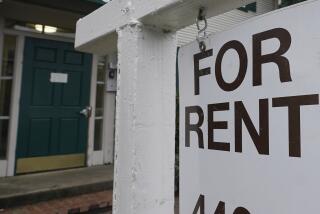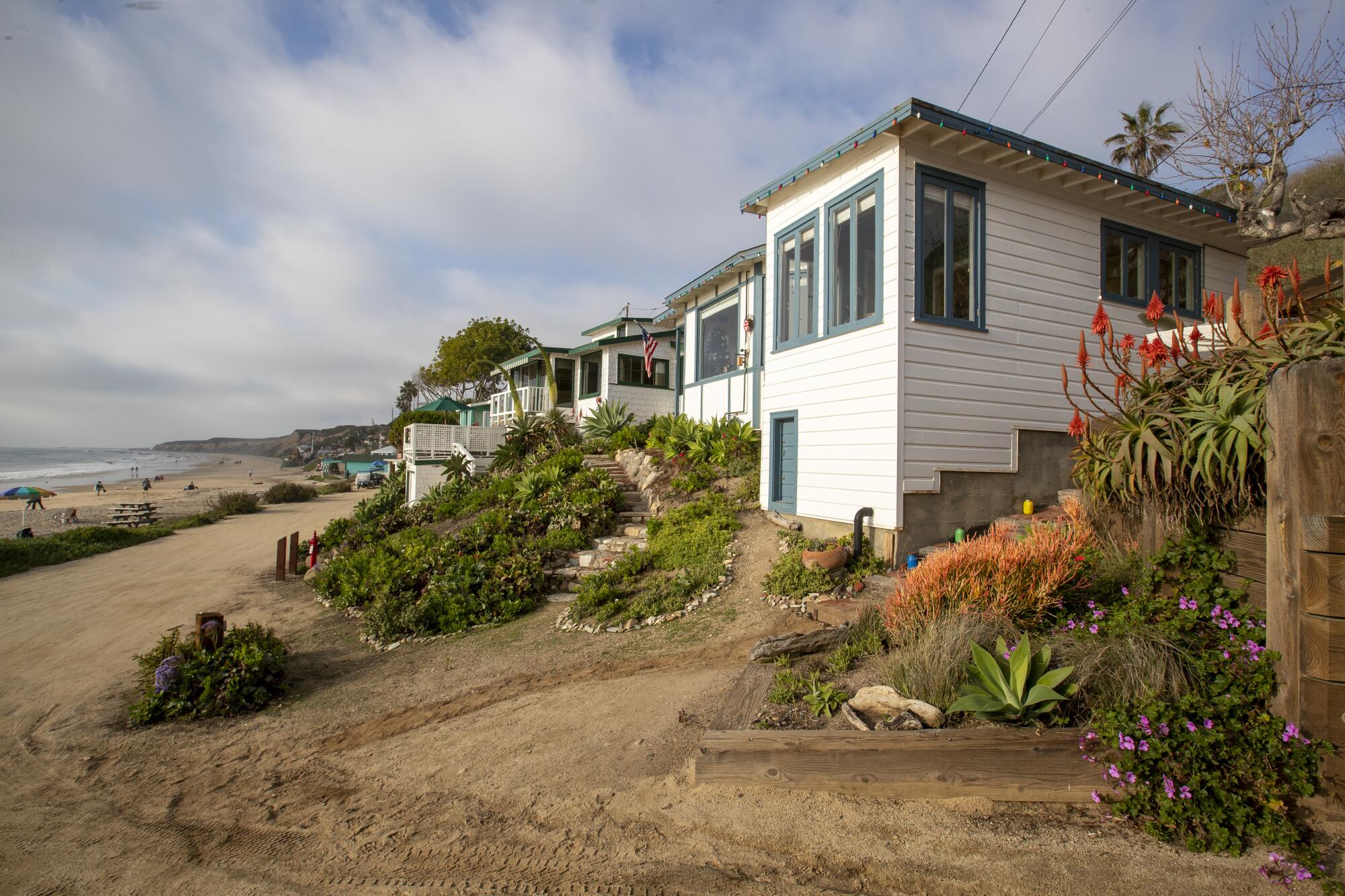
It’s a coveted perk for state parks employees: For just a few hundred dollars a month, they can live in government-owned homes in some of California’s most scenic and sought-after locations — beachfront cottages, historic houses in pricey neighborhoods and cabins surrounded by stretches of pristine wilderness.
The benefit was created so California Department of Parks and Recreation staff could live close to the natural treasures they protect or maintain. But the well-intentioned program has been poorly managed, with current and former employees alleging that state property is being used for the benefit of some favored staff members, according to a Times investigation.
The department’s nearly 500 occupied state-owned houses, mobile homes, dorms and trailers rent — on average — for $215 a month, according to a Times analysis of state housing data. At those prices, the revenue from renting homes to employees is not enough to cover the cost of maintaining them. A review of state housing data, county tax assessor documents and other public records also found that the agency has disregarded state policies outlining when its cut-rate rents should be increased.
State policy requires rent to be raised to market value whenever an employee tenant moves out, but three years of records show that rental prices have not increased in the vast majority of cases.
And there are other issues in the parks department’s housing program, including allegations from current and former employees about questionable spending to upgrade homes and claims that favoritism plays a role in who is awarded the benefit. In addition, error-ridden record keeping has complicated oversight.
In one case, the parks department spent $350,000 to renovate a cottage in Point Lobos State Natural Reserve, although the agency told The Times it has yet to decide what to do with the property. The historically preserved home sandwiched between employee houses has remained vacant since last year.
In another instance, a family who donated a 19th century Monterey home to the state argues that they were led to believe it would be opened to the public as a museum paying tribute to Cannery Row history. It has instead been used as employee housing for $193 a month in rent.
Do you have a tip?
Have insight or feedback about how the Department of Parks and Recreation is managing its employee housing program? Share your tips with state government reporter Melody Gutierrez.
[email protected]
Public records obtained by The Times show that a superintendent moved into a coastal home in Santa Barbara last year and his rent dropped nearly 50% compared to what was paid by the previous tenant, a park ranger.
The parks housing program is “a gift of public funds that is being given without any particular merit, without any oversight, and it’s wrong,” said former Orange County Assemblyman Chuck DeVore, who wrote a law in 2006 that attempted to fix problems in the program.
When presented with The Times’ findings, the parks department said in a written statement that it is “evaluating the department’s housing policy and program to review rental rate increases, housing assignments, and other elements, and update policies where needed.” The department conceded that “adjustments to rents have not been made on a consistent basis.”
California State Parks Director Armando Quintero, who was appointed by Gov. Gavin Newsom in August, said in a statement that his 22 years of experience as a park ranger showed him that having staff live inside or close to state parks is critical. But he said a review is underway by a statewide task force to look at the department’s housing policies. He declined to be interviewed.
“The Department of Parks and Recreation understands it has a responsibility, especially at a time when California families are facing historic housing costs, to ensure the Parks Department’s employee housing policies effectively steward department resources and prevent abuse,” the department statement said.
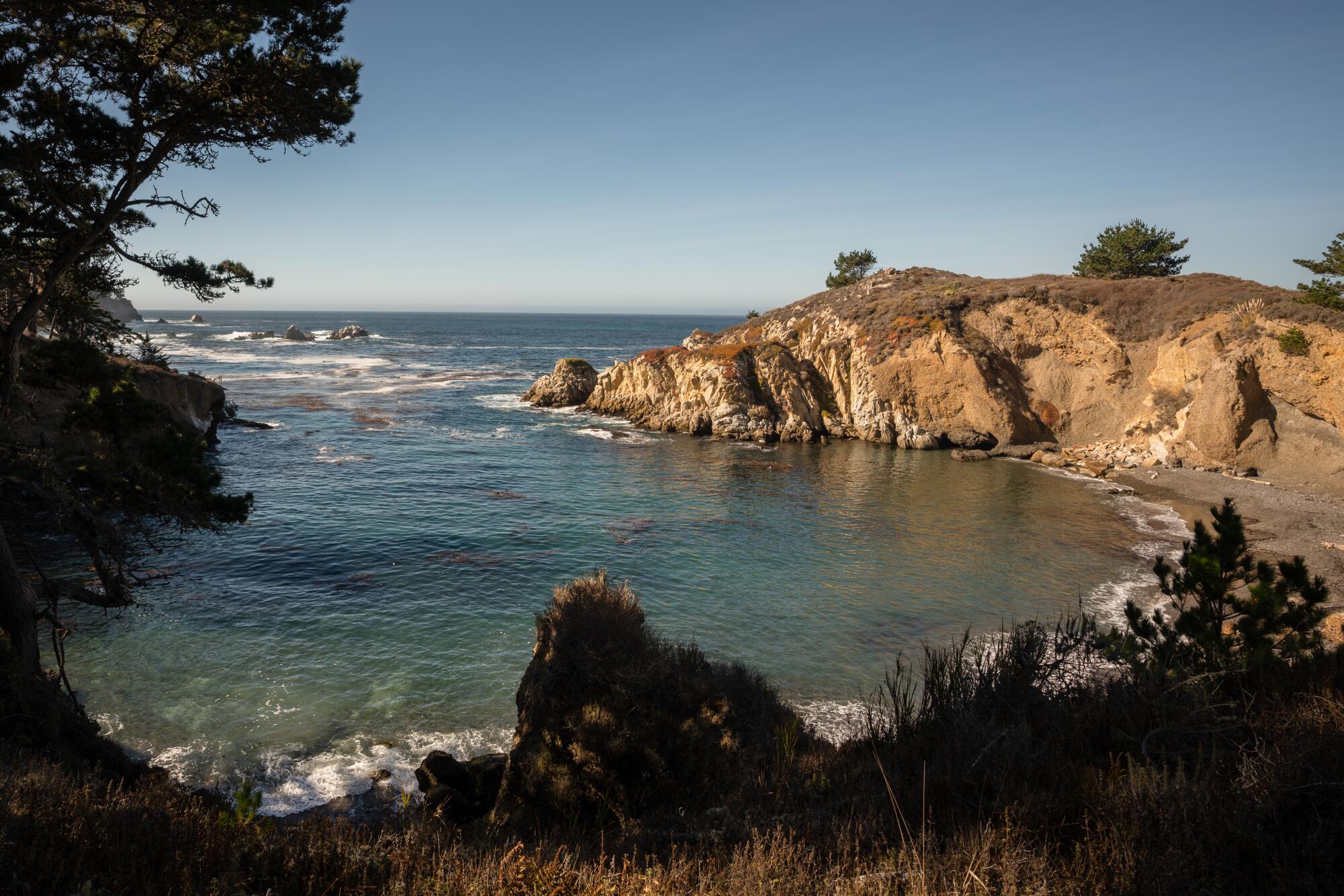
◆◆◆
Steps from the shore at Crystal Cove State Park in the pricey enclave between Newport Beach and Laguna Beach sits an 1,100-square-foot cottage with French windows and unobstructed ocean views. A state parks employee lives there for $232 a month. Two doors down, a three-bedroom home designated as employee housing goes for $395 a month.
Meanwhile, vacation cottages next door are advertised as affordable rentals available to the public for up to $269 a night — generating about $8,000 a month — and are booked solid six months in advance, according to the parks department website, Reserve California.
Employee rents are not supposed to be priced so low. California law calls for government-owned homes to be rented at “fair and reasonable” rates, which DeVore wrote into the 2006 bill.
DeVore introduced the legislation after learning that parks employees were paying extraordinarily low rents for coastal cottages at Crystal Cove State Park. He was particularly irked that a parks superintendent was living there at a low rate while renting out a home he owned nearby for far more — a practice that several parks employees told The Times is common.
That same year, the cheap rental prices drew the attention of California’s state auditor, who criticized the parks department and other agencies for pricing employee housing too low, warning that subsidized rent represented a loss of millions in revenue to the state.
The law DeVore authored requires the California Human Resources Department to set rental policies and the director of each state agency to follow those regulations. But the law does not specify what is “fair and reasonable,” and with little incentive to raise rates, most rents have remained stagnant for decades.
“Here’s the issue with providing housing to select public employees at substantially below-market value: There are far more employees than there are available homes,” said DeVore, who now works for the Texas Public Policy Foundation, a conservative think tank. “And what ends up happening is that some employees do very well and live like kings in amazing locations in California, and other employees don’t have that opportunity and perhaps never will.”
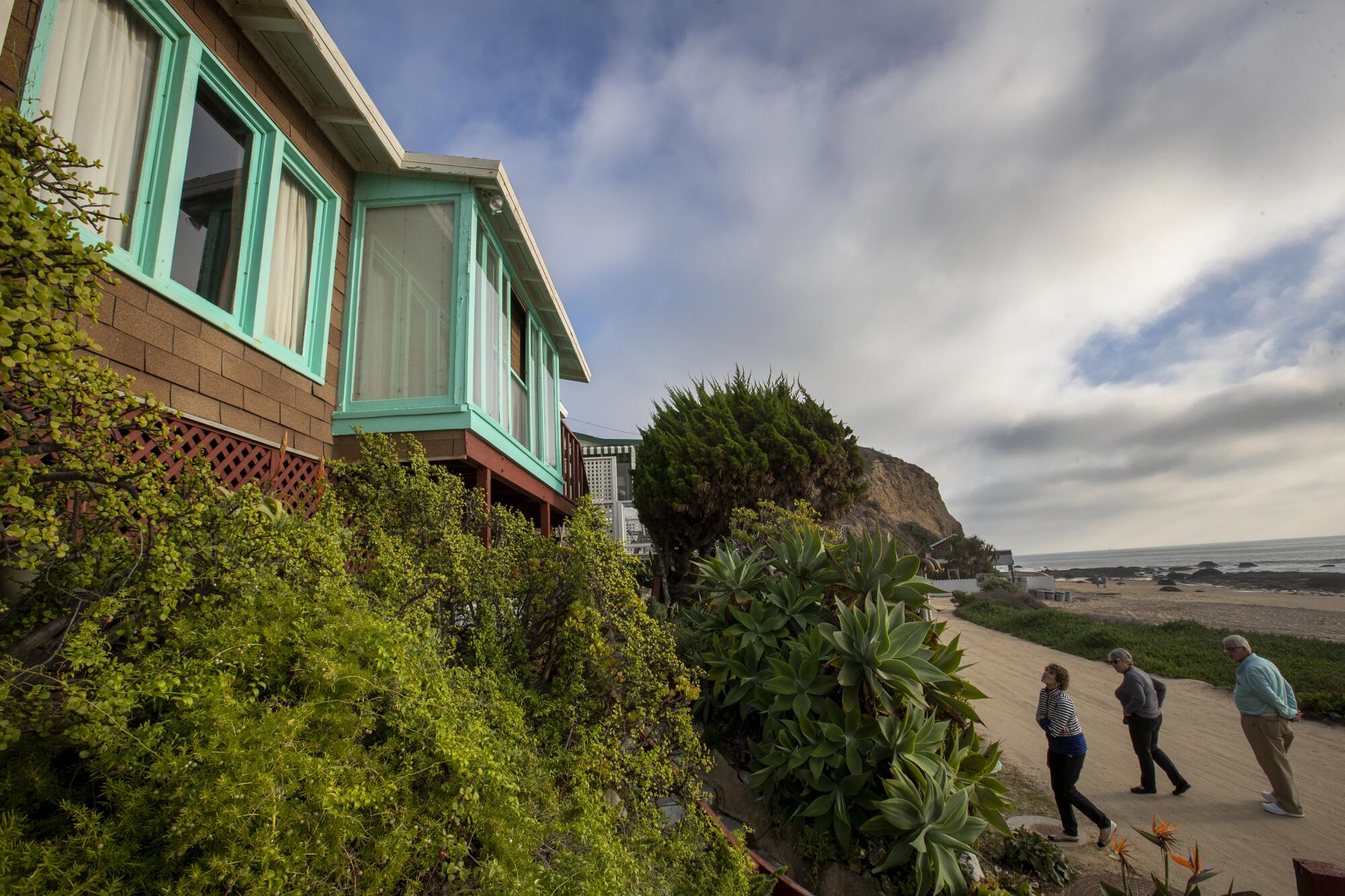
◆◆◆
Chuck Bancroft lived in state housing for most of his three-decade career as a park ranger in Point Lobos State Natural Reserve near Carmel.
“It’s an extremely nice benefit,” Bancroft said. “The downside was you responded to calls at all hours.”
Though the program is intended to allow state rangers and lifeguards to better care for public lands and respond to emergencies, Bancroft said he’s also seen employees use state-owned homes for their private benefit. One parks superintendent moved into a stunning home with ocean views and stopped allowing the public to access the property, he said.
Bancroft said there was friction when higher-ranking supervisors who were less likely to respond to emergency calls took the nicest homes or awarded those properties to favored employees. Those criticisms were echoed by more than a dozen current and former parks employees who spoke to The Times on condition of anonymity, citing fear of retribution, and said the housing program is long overdue for a deep clean.
One current employee said parks superintendents effectively act as their own landlords, while their employees are their tenants. The arrangement leads to problems, including inequitable rents and housing maintenance requests that are prioritized unfairly, the source said.
“This is entirely managed at the whims of who is in charge,” a former parks employee said. “There are no checks and balances in this system. A district superintendent can approve $30,000 in repairs for their state home and I couldn’t get a screen door.”
State housing data and county tax records from 2018 show that two nearly identical homes next door to each other at El Capitan State Beach in Santa Barbara County rented for vastly different rates in 2018. The home with a better view went to a park superintendent at $232 a month while a park ranger paid $499 for the other one.
After the ranger moved out last year, Channel Coast District Supt. Greg Martin moved into the home in June and the rent dropped to $264, state housing data and property records show. Martin did not respond to a request for comment.
Asked why Martin paid nearly 50% less than the previous occupant, the parks department declined to comment on the arrangement, but said that the rent was set in accordance with state policies and union contracts.
The department acknowledged, however, that rental amounts charged to employees are inconsistent. After The Times’ inquiries, the parks department said the governor’s office had formed a statewide task force to review potential changes to housing policies.
“State Parks is evaluating its housing program to ensure it is being a good steward of the people’s money and how it serves the public,” the department said.
There are no limitations on how long an employee can live in parks housing. Some reside in state-owned houses for decades, either remaining at the same property or moving from house to house, county tax records and state housing data show.
Former parks department director Rusty Areias said the housing program “merits a review,” but defended the need for the benefit.
“These are essential workers, and state parks employees are generally underpaid,” Areias said. “You can’t pay your mortgage or your kids’ tuition or a lot of other things on the salary that many of these people are making. I’m not saying there aren’t abuses or situations that don’t meet the smell test, but it’s very complex because of the number of parks in remote or expensive areas.”
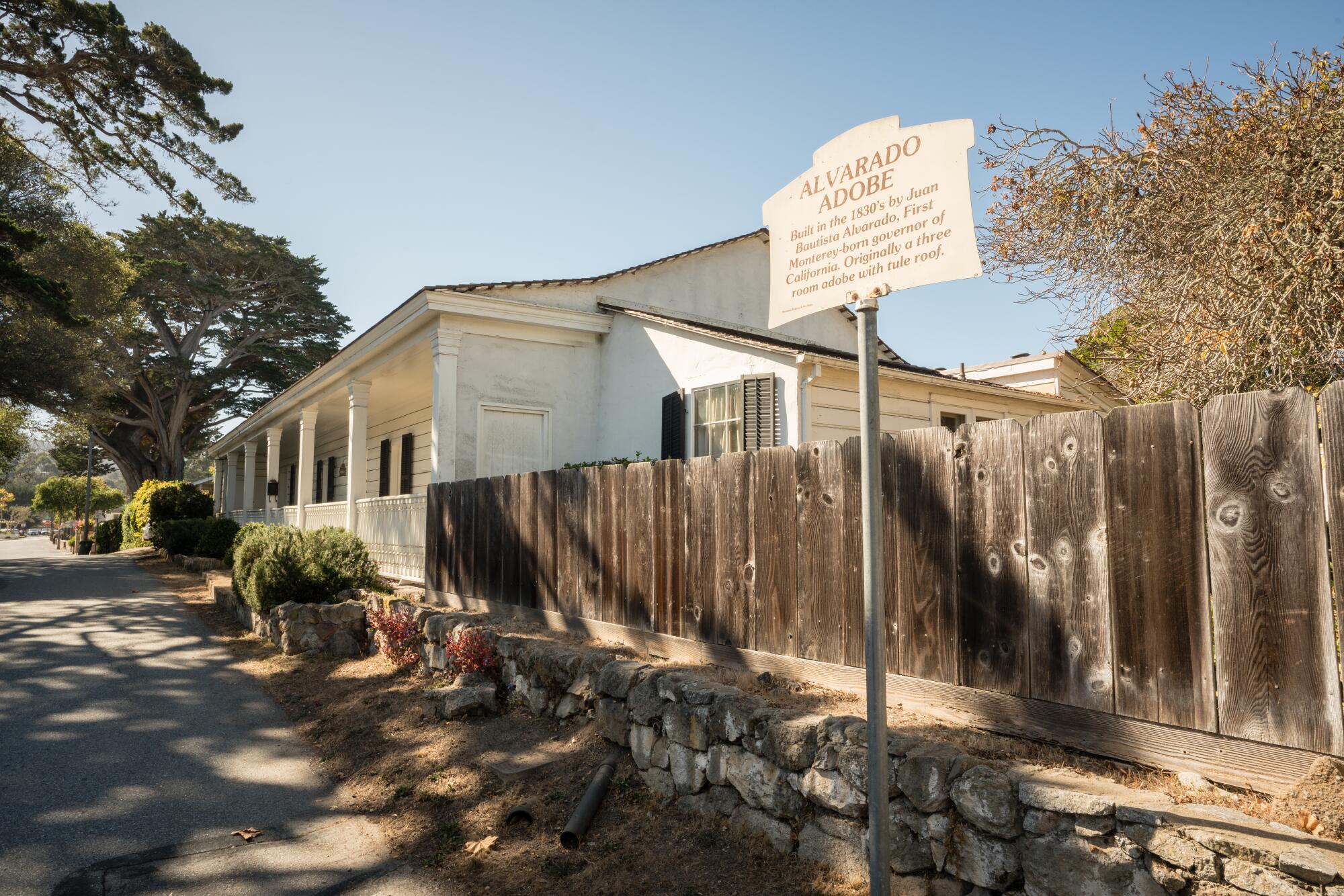
The parks department said it doesn’t consider whether an employee already owns a home when determining whether to assign a residence to them.
In Monterey, a parks superintendent who has for the past 10 years rented a historic adobe home for $211 a month owns a home nearby in Carmel that was marketed as a $4,000-a-month rental, according to a now-expired listing.
“I understand that optically that doesn’t look good,” Areias said.
Quintero, the parks director, said in a statement that having staff in state-owned housing has allowed parks employees to respond quickly to emergencies. Quintero lived in federal parks housing for about four years while working for the National Park Service, the department said.
“When Big Basin Redwoods State Park was burning earlier this year, staff that lived in the park safely evacuated people … while their own park residences were lost to the fires,” he said, adding that the department will continue to work with the task force to evaluate housing policies and “implement any recommended changes.”
The agency said it determines rental rates using factors including square footage and the age of a structure, and that rents were raised on all properties by 25% in 2017.
Still, some parks employees pay as little as 5% of market value for their housing, according to annual reports that the department is required to send to the Department of Human Resources, known as CalHR. In many cases, the market values listed for the properties are four to five years old, suggesting that employees are getting even better deals than outlined in state data.
◆◆◆
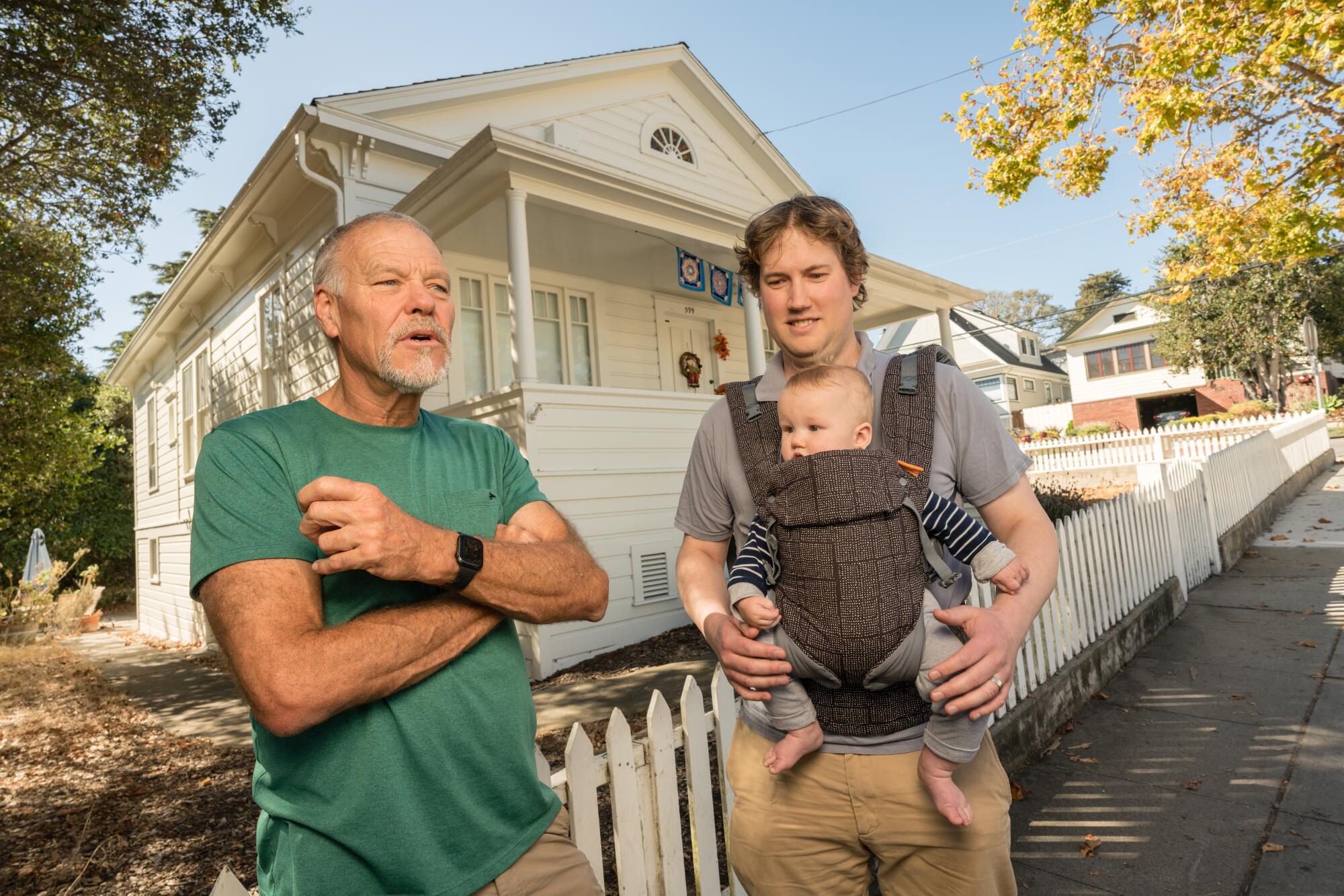
Thad Sigourney’s mother wanted her Monterey home and its sizable lot to go to the state when she died. In a philanthropic gift, Mary Sigourney requested that her home pay tribute to Portuguese fishermen like her grandfather, who settled in Monterey in the late 1800s.
The family said parks department officials led them to believe that the home, located in the city’s historic district about a mile from Cannery Row, would become a museum.
The deed to the nearly half-acre property — valued at $486,500 in 1989 — states it is “subject to the condition that the properties are to ... commemorate the role of the Portuguese and other working people in early Monterey history.”
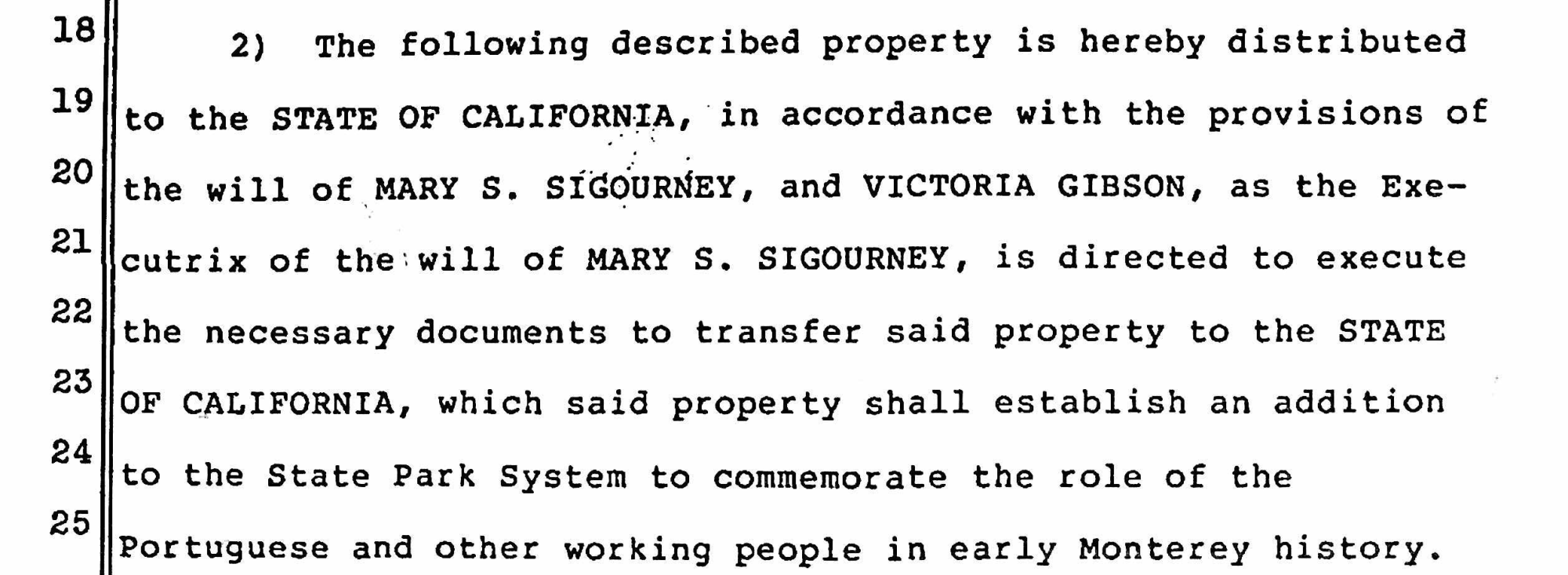
In 1990, then-Chief Deputy Parks Department Director Les McCargo wrote that the home would allow the department “to extend its interpretative program to cover ... early Monterey history and the role of the Portuguese people,” according to a letter provided to The Times by Sigourney’s family.
But shortly after Sigourney’s estate handed over the property, the parks department starting using it for low-cost employee housing, and the home has been a staff residence ever since.
“It was never used as my mother intended,” said Thad Sigourney, a retired schoolteacher.
Property records show the first employee to move in was parks historian Robert Reese, who urged the state to accept Sigourney’s donation because he believed the home would make a good “period house museum,” according to a 1989 acquisition proposal. Reese lived in the home for more than a decade with his wife Gloria Bauder-Reese, a parks administrative employee.
In some of the years the Reeses lived there, the signature of the supervisor on the rental agreements belonged to Bauder-Reese. Efforts to reach the couple were unsuccessful.
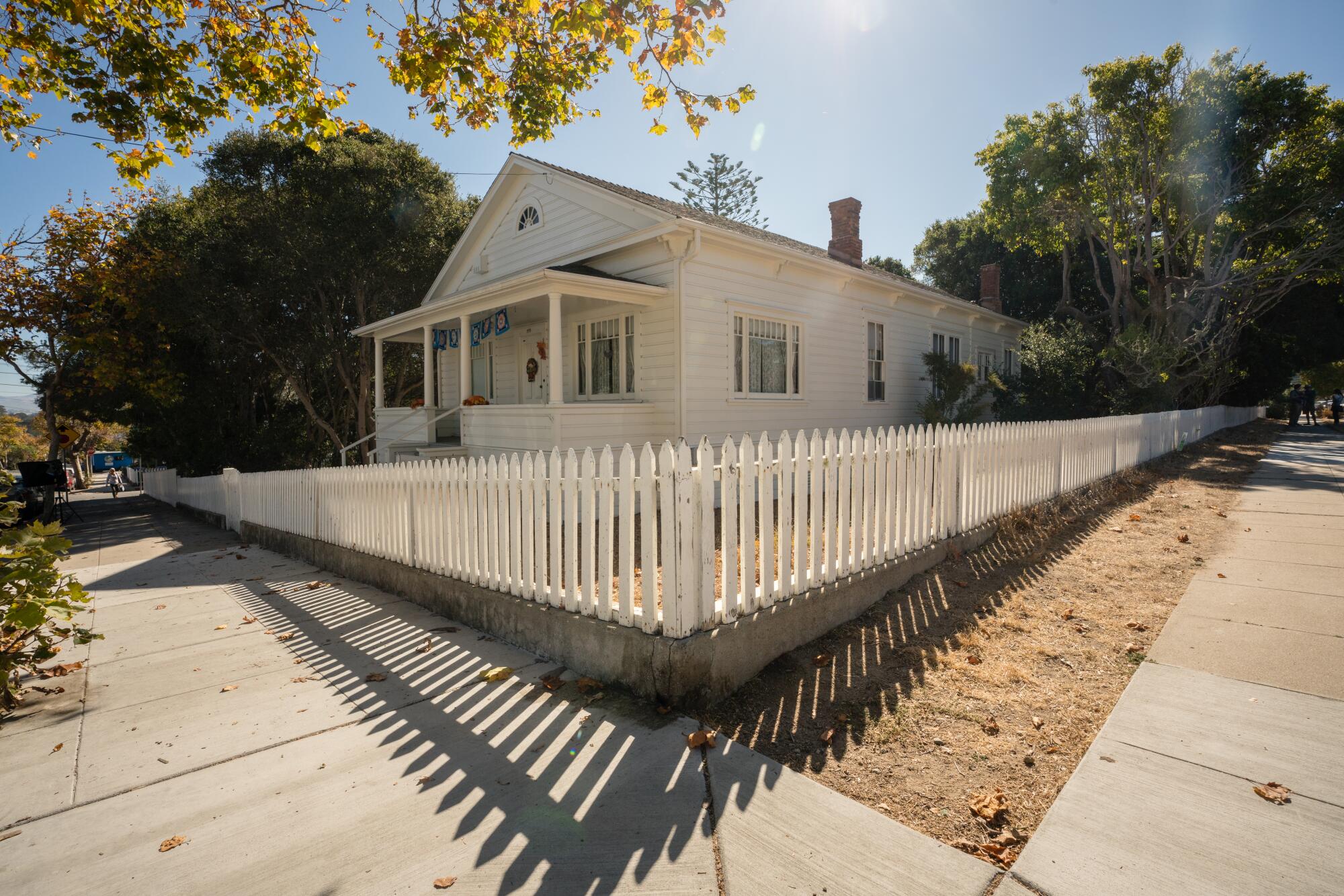
The parks department said Bauder-Reese signed off as a supervisor on required documents for her employee housing. A parks district superintendent signature was also required, the department said.
This year, the Monterey home rented for $193 a month to a state parks museum curator, who moved into the residence in 2005. The last appraisal on the property four years ago estimated the home could fetch $2,000 a month. Nearby homes advertise online for $3,000 to $4,000 a month.
Thad Sigourney has campaigned to have the parks department change how it uses the property, urging the agency to open the three-bedroom home and its once-lush garden to the public. His son-in-law, Robert Schroeder, filed numerous public records requests to try to determine how the home could have become a private low-cost rental for employees. That question still remains, he said.
“They accepted the gift on the promise of turning it into a museum,” Schroeder said. “And they have no plans to. It’s a joke. It would be one thing if this was a house in the middle of nowhere, but this is in downtown Monterey. They are giving housing to each other as a perk and it’s absurd.”
The agency said that because the word “museum” is not in the deed, staff housing is an appropriate use.
In June, the agency made a small change to the property, adding two small signs noting that it is part of the Monterey State Historic Park cellphone tour, with a phone number leading visitors to a recorded message with information about Portuguese fishermen.
For Sigourney, the department’s response was too little and three decades too late.
“These places should be charging thousands and they are offering it for practically nothing,” Sigourney said.
◆◆◆
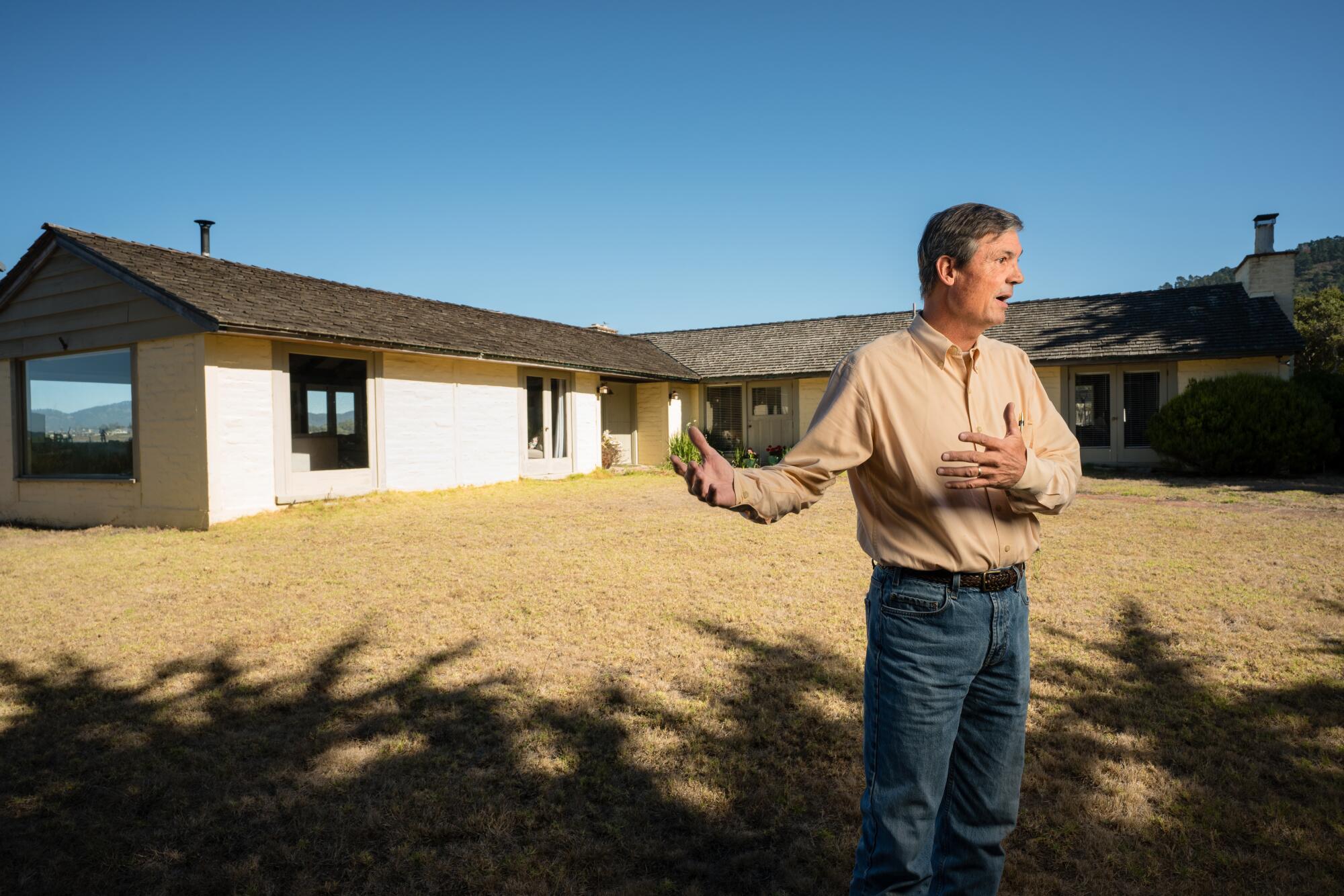
The low-cost employee housing perk has long irritated Augie Louis, a former president of the Point Lobos Foundation, which raises money for the reserve.
Louis said the parks department has failed to look at some of the state-owned properties as revenue sources, including the Hudson House in Point Lobos that once belonged to his wife’s family before the state acquired it by eminent domain in the 1970s.
He said such homes could be used as wedding venues or meeting spaces, which would help pay for trail upgrades and park maintenance. Too often, Louis said, the parks department turns to voters for bonds to cover those costs.
Initially, half of the Hudson House was used as a community meeting space and the other half as employee housing. Louis said that changed when a superintendent moved into the home a decade ago and made it a private employee residence.
Located off iconic Highway 1, the house sits above acres of scenic coastal trails where hikers can see harbor seal pups lining the beaches in spring. The state’s 2016 appraisal notes the 2,400-square-foot-home could rent for $3,800 a month, a conservative estimate given its sizable lot looking toward Pebble Beach. The house is currently rented for $255 a month to a lifeguard supervisor.
Louis said the parks housing benefit began with good intentions of offering employees a place to live in remote areas and ensuring that emergency and maintenance workers are able to respond quickly. Over time, Louis said, the department began to prioritize using the properties in ways that benefited employees instead of what benefited the public.
“When you look at the economics of it, it’s clear,” Louis said. “It was a good idea that was run off the rails.”
More to Read
Sign up for Essential California
The most important California stories and recommendations in your inbox every morning.
You may occasionally receive promotional content from the Los Angeles Times.

